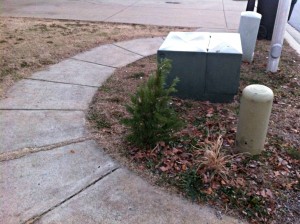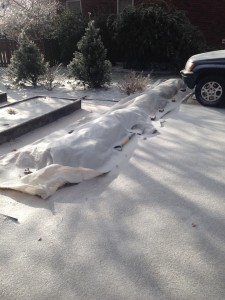Do you have underground utility boxes in your landscape? Or something else unsightly? The easiest way to hide this necessary eyesore is to install evergreen plants to hide the view. The landscape problem arises when the wrong plant is installed.
Leyland Cypress (x Cuprocyparis leylandii) grows too wide and tall unless it’s sheared regularly. In this case it’s planted too close to a sidewalk. One side of the poor thing will have to be cut to allow passersby. That means it’s going to look ugly! The homeowner has just created a maintenance chore.
Leylands work great in wide open spaces, like a backyard. That’s why they’re so popular with contractors. They grow quickly and fill out to create privacy.
There are better choices to hide these utilities. Something that doesn’t grow as wide, but tall enough to screen the objects from the street. Here are three suggestions.
- Privet (Ligustrum) is a plant genus with many kinds of evergreen shrubs. Ligustrum varieties grow rapidly. Planting a Ligustrum shrub here would require pruning to keep the sidewalk clear.
- Sky Pencil Holly (Ilex crenata ‘Sky Pencil’) would work in the situation above. Something narrow and thin. Group them together like a hedge to form one mass.
- Korean Boxwood (Buxus sinica var. insularis ‘Wintergreen’) varieties are tough and perform in difficult places like this. In the image above, I would plant one shrub on each side of the square box. Over five years they would surround this unsightly space growing to a width of 5 ft.
Question: What trees or shrubs do you use to hide unsightly objects?






